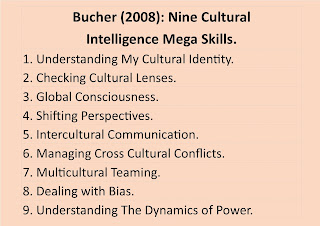PROFESSIONAL ONLINE SOCIAL NETWORKS
General Social Media Reflection:
Prior to my awareness
of the Conversation Prism, Solis (2016), my understanding of social media was; Facebook,
Twitter, Flickr, Snapchat and Instagram. The Merriam-Webster dictionary defines social media as; “forms
of electronic communication (such as websites for social networking and
microblogging) through which users create online communities to share
information, ideas, personal messages, and other content (such as videos)”. I
hadn’t considered the forms of e-learning that are an integral part of my
teaching programme as ‘social media’. It seems I do use social media,
incorporating it when and where I can to give my learners the expertise and
abilities to move forward into a potentially unknown, but certainly digital
future. As stated by Sharples et al (2016), social media has the capabilities
to bring learning to life as different times, spaces, characters and
possibilities can be mustered with a few clicks of a mouse or finger slide on a
track pad. Millennials live and breathe on social media. They are totally
engaged in the medium. For teachers, the door to engagement is there, ajar. I’ve
started to source the oil for the hinges to open it fully. Thus enabling me to
be part of the journey that is transforming how students learn.
 |
| The Conversation Prism, Solis (2016). |
Including Social Media in My Teaching.
- When I taught internationally I made Skype dates between my NZ and Thai classes. This was authentic, real-time and engaging. The students had questions prepared and toured the respective schools, sharing the differences.
- We use Seesaw daily. This student-driven digital portfolio empowers my students to independently document their learning. They upload movies, photographs, text notes, drawings and stories. My learners have upwards of 200 posts each. I share my teaching through photographs of modelling book entries and homework reminders. The instant nature of sharing with caregivers (worldwide) and getting feedback/feedforward is excellent.
- I use Blendspace to flip the classroom, collating engaging activities based on our current topic. My pupils enjoy the independent nature of it, working thorough the activities at their own pace. It frees me up for those important student interactions and one to one teaching opportunities that sometimes get lost in our busy day.
- My students love Pobble365 as motivator for their Quick Writes. Our next stage is to publish our writing locally, nationally or even internationally. All comments left on Pobble are verified by before being approved. Piclits is another e-learning writing website that we use where the student’s writing can be blogged, emailed or saved.
- Sumdog uses game-based learning with the element of competition being very motivating. The ‘live’ component of Mathletics enables my pupils to compete with other learners worldwide.
- In my teaching I also use Reading Eggspress, studio.code.org, scratch.mit.edu, YouTube, TeacherTube, EDPuzzle and Studyladder.
The Potential Challenges:
The potential
challenges that I need to be cognizant of are social media predators and online
bullies. I am worried that my pupils will post material that will potentially,
be permanent. Sometimes, I find that nuances of technology (internet
reliability, strength etc.) can be problematic. Privacy, ‘real friendships', information
sharing, ‘fake news’ and miscommunication are also potential challenges. Considering
the positives, I contemplate that the problems are relatively few and quite
solvable.
Addressing The Challenges:
A school must have in
place clear policies and pedagogy. There also should be strong expectations for
students; that the internet is for learning and school is not the place for the
commercial social networking sites. Teachers should plan high quality lessons, considering
their purposes and benefits. Effective technical monitoring needs to take place
and students need to be taught about online safety and responsible use. A Google
search brings up many sites that contain relevant and helpful information to
address any challenges regarding using social media in the classroom. The NZ
Teachers Council’s (2012) video, Establishing Safeguards, discusses the importance
of careful planning, communication and discussion to ensure teaching and
learning through the use of social media is carried out safely.
REFERENCES:
Guidelines on Ethical Use of Social Media. Retrieved from; https://teachersandsocialmedia.co.nz/guidelines-ethical-use-social-media
Merriam-Webster.(n.d)
Social Media. Retrieved 19 October
2017 from https://www.merriam-webster.com/dictionary/social%20media
Sharples, M., de Roock , R., Ferguson, R., Gaved, M.,
Herodotou, C., Koh, E., Kukulska-Hulme, A., Looi,C-K, McAndrew, P., Rienties,
B., Weller, M., Wong, L. H. (2016). Innovating Pedagogy 2016: Open University
Innovation Report 5. Milton Keynes: The Open University. Retrieved from http://proxima.iet.open.ac.uk/public/innovating_pedagogy_2016.pdf
Solis, B. (2016), the
Conversation Prism. Retrieved from: https://conversationprisim.com/
The New Zealand
Education Council (2012) has a video: Establishing Safeguards. Retrieved from https://vimeo.com/49216520





Hi Janice. Thanks so much for your thoughtful blog. I am impressed with the use of social media in your classroom teaching! It certainly sounds time consuming; the need for planning, ensuring learning activities are engaging and then monitoring these social media interactions. This time aspect must be a consideration for any teacher? You discuss the challenges and regard these as relatively small in comparison to the positive aspects. As teachers we need to ensure we equip our students from an early age to be critical users of this technology; question and challenge the sources, be considerate with appropriate interactions etc. This is hard and should not be the sole responsibility of the teacher; home needs to help too?! It's a whole new world - and quickly changing - and the skills required are important in current and future classrooms. Carmen
ReplyDeleteHi Carmen. Thanks for your comment. Yes, it is going to be a challenging journey and I agree that home should have a 'buy in' as well. Critical, challenging and consideration. Perhaps the 3C 's will take over from the 3R's?
ReplyDelete